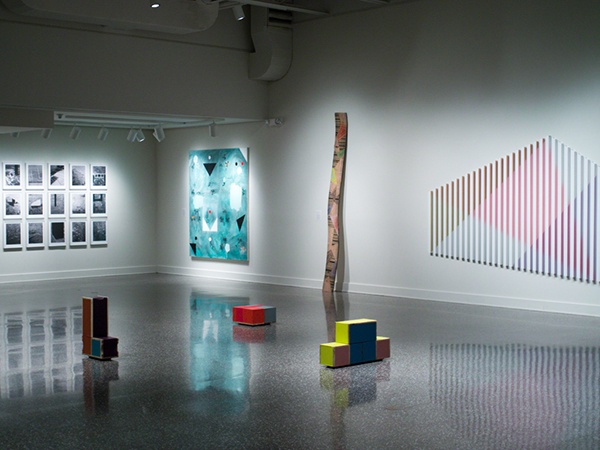
The Samuel Dorsky Museum opened its doors to four new exhibits on Saturday, Feb. 7, including a large-scale display of the work from some of the biggest video innovators in U.S. history.
These include “Grace Hartigan: Myths and Mails,” “The Maverick Festival at 100,” “Edward Sheriff Curtis and Native Americans” and the headline exhibit “Videofreex: The Art of Guerilla Television.”
Some of the earliest pioneers of portable video, the Videofreex were a group of 10 hippies who created countercultural film projects from 1969 to 1978. They were originally hired by CBS in 1969 to create a television pilot titled “Subject to Change” that documented the counterculture movement happening in the U.S. at the time. Although they were fired and their footage never aired, the group was allowed to keep the video equipment and footage, which CBS assumed was useless.
They couldn’t have been more wrong as those 10 hippies would go on to film over 1500 tapes and document many of the 1970s crucial cultural events. The Videofreex used the portable Portapak video camera to film all kinds of events and conduct interviews and broadcast much of their content on their underground television station Lanesville TV.
On Saturday evening, nearly all of the original Videofreex members were in attendance at the Dorsky, welcoming visitors to their exhibit during its opening reception. Although they never intended to have their work showcased in a museum, Videofreex were happy to have their work and equipment featured at the Dorsky.
“Don’t let them put us in the museum, it’ll finish us off,” said Skim Blumberg, a prominent member of the Videofreex. “But yet, here we are.”
Mary Curtis Ratcliff, one of the founding members of the Videofreex, echoed Blumberg’s statement.
“We would never have believed 40 years ago that we would be welcoming you all to this show,” she said.
Members of the Videofreex and others honored the late Chuck Kennedy, an important member of Videofreex.
“He was curious about everything,” said Dave Jones, a video artist and engineer. “It drove him in a manic direction to understand video and electronics. It set him apart.”
The exhibit features many of the videos taken by the Videofreex, including famous clips such as their interview with Fred Hampton in 1969. Also featured is an installation titled “Contraband,” which contains a guitar case with video tapes inside it. In 1969, the Videofreex were worried that CBS would give their footage of activists Fred Hampton and Abbie Hoffman to the FBI, so Blumberg snuck into the CBS corporate office and smuggled the tapes out in his empty guitar case. Also featured in the exhibit is all of the equipment used to create the videos, as well as old promotional posters and flyers.
“Videofreex: The Art of Guerilla Television” exposes just how grassroots their initiative was, and how they attempted to change the television landscape that was dominated by three news stations.
The Videofreex have a documentary coming out this spring titled “Here come the Videofreex!” The exhibit documenting the iconic filmmakers runs until July 12.
“Grace Hartigan: Myths and Malls” features the work of the late Grace Hartigan, one of the prominent New York abstract expressionist painters in the 1950s. Most of her work being oil on canvas, Hartigan’s paintings are inconsistent by nature. Half of “Grey Eyed Athena” (1961) was done with a heavy brush and no liquid, while the other half looks like a watercolor. Hartigan’s paintings are collections of things we see in nature and everyday life, organized and painted in an abstract form.
“The Maverick Festival at 100” is a collection of vintage photographs, oral histories and documents honoring the 100th anniversary of the Maverick Festival, an outdoor carnival based in Woodstock. Students in the Spring 2014 Museum Studies class researched and wrote the labels for the photographs.
“Edward Sheriff Curtis and Native Americans” is a collection of photographs depicting Native American tribes in the early 20th century. Curtis took over 40,000 photos from approximately 80 tribes. This exhibit highlights his best work.
